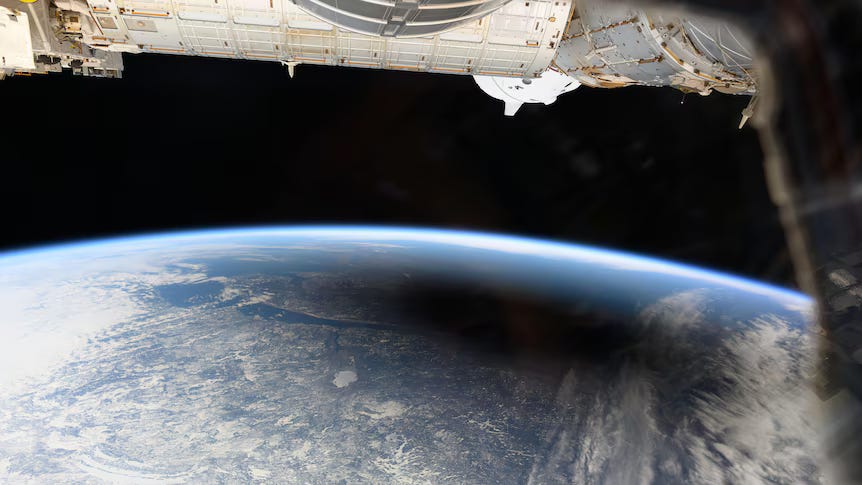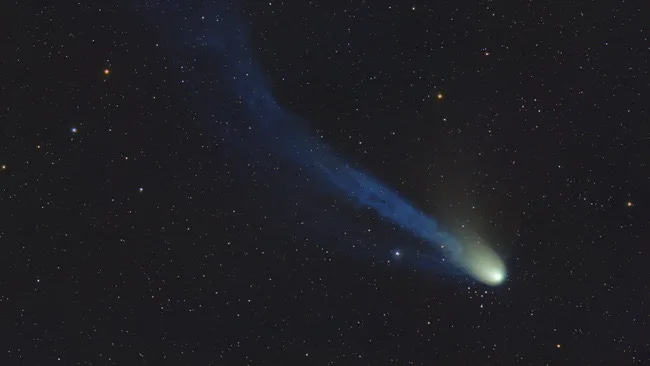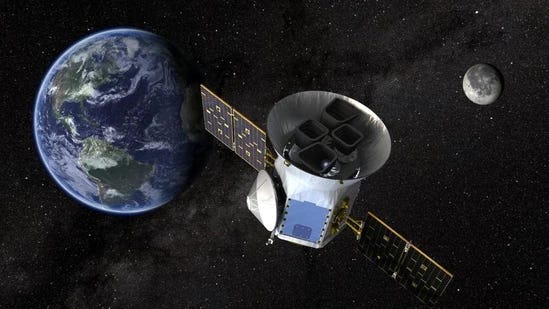North America witnesses rare total solar eclipse
Last month, parts of North America experienced a very rare total solar eclipse. In some regions, people reported that even the solar lights went on for a short period of time. The phenomenon was also caught by the International Space Station. The picture below shows the image taken from the ISS, of the moon’s shadow (umbra) covering a large portion of the northern hemisphere.
Devil’s comet reaches peak brightness
Recently, the Devil’s comet also known as 12P/Pons-Brooks, reached its peak brightness as it passed near the sun. The comet is a popular and rare one that enters the inner solar system every 71 years. A unique feature of the comet is its frequent ‘bursts’. These ‘bursts’ are caused by the dust, ice and rocks on the comet that get turned into gas due to the sun’s heat.
US satellite has a close shave with unused military satellite
This April, an expired Russian military satellite came dangerously close to colliding with a US weather satellite named ‘Timed’. Luckily, no collision occurred and the 2 large satellites missed each other by just a mere 10 metres. If they had collided, it could have had serious consequences as it could have dropped down to the earth and endangered several lives.
Voyager-1 resumes contact after five months
Voyager-1, launched in 1977, is one of the only spacecraft to cross the solar system’s boundaries and enter interstellar space. As it grows older, its system malfunctions are getting more frequent. In November 2023, it suddenly stopped transmitting signals to the Earth due to a damaged chip in the craft that stored crucial code and programs needed for its functioning. The spacecraft could execute commands sent to it, but couldn’t communicate any data to Earth. Last month, experts successfully relocated the portion of code to a new memory area, restoring Voyager’s functionality after 5 months of effort.
NASA deploys solar sail successfully
NASA successfully launched its breakthrough solar sail technology and deployed it in space. The Advanced Composite Solar Sail System is kind of like a satellite. It is a technology demonstration mission, that uses large sail-like structures to propel itself forward. It functions similarly to the sails on a boat. The only difference is that in place of the wind, it is the light particles from the sun (photons), that will be used to push the spacecraft forward.







